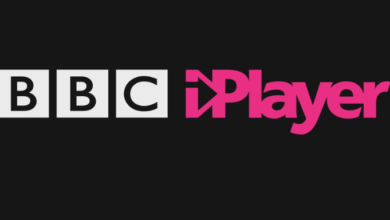Opensea Blur Februarythompsoncoindesk

In the world of digital art and collectibles, OpenSea has emerged as a leading marketplace for non-fungible tokens (NFTs). NFTs are unique digital assets that are stored on a blockchain and verified by smart contracts. They have exploded in popularity in recent years, with artists and creators using them to monetize their work by selling one-of-a-kind pieces or limited editions.
However, this burgeoning market is not without its challenges. The rise of NFTs has sparked debates about the value of digital art, environmental concerns related to the energy consumption required for blockchain transactions, and questions about who truly owns these assets.
Against this backdrop comes OpenSea Blur, a new feature that promises to change the way we interact with NFTs. In this article, we will explore what OpenSea Blur is, its impact on the NFT marketplace, and what it could mean for the future of digital art ownership.
An Overview of OpenSea and NFTs
The present discussion concerns an overview of OpenSea and the emerging trend of non-fungible tokens (NFTs) in the digital art market.
OpenSea is a blockchain-based marketplace that allows users to buy, sell, and trade NFTs.
NFTs are unique digital assets that are verified on a blockchain network, allowing for secure ownership and transfer.
NFT adoption has increased significantly in recent years as more artists and collectors recognize their potential value.
Blockchain technology provides a transparent and immutable record of ownership, making it an ideal platform for NFT transactions.
With the rise of digital art and the growing interest in decentralized technologies, it is likely that NFTs will continue to gain popularity in the coming years.
What is OpenSea Blur?
OpenSea Blur is a new feature introduced by OpenSea that allows NFT creators to add a blur effect to their digital art, making it harder for others to copy or steal. This feature works by applying a Gaussian blur filter to the image and creating two versions of the NFT – one with the original high-quality image and another with the blurred version.
While this feature provides benefits for NFT creators in terms of protecting their work, it also has potential drawbacks such as reducing the value of the NFT or creating mistrust among buyers who may question the authenticity of the artwork.
Read also: Hua Hong Semiconductor China 2.5b Ipo
How it Works
Imparting a functional understanding of the workings of OpenSea’s blur feature necessitates an examination of its underlying mechanics. To begin with, here are four key aspects to consider when exploring how the feature functions:
1) The blur feature essentially allows users to hide specific parts or aspects of an NFT (non-fungible token) until a certain condition is met, such as a successful purchase. This can help create a sense of exclusivity and scarcity for buyers.
2) Notably, implementing this feature can be challenging due to the need for smart contract integration and the potential risks associated with modifying existing contracts.
3) The actual process of blurring typically involves using encryption techniques that are similar to those used in blockchain technology itself. This ensures that only authorized users can access the unblurred content once conditions have been met.
4) Finally, while there are benefits for buyers in terms of privacy and exclusivity, it’s worth noting that sellers may also benefit from this feature by allowing them to control access to more sensitive information about their NFTs until they’re ready to share it with buyers who have proven themselves trustworthy.
Benefits for NFT Creators
One potential benefit for NFT creators is the ability to selectively reveal additional information about their work, which could be particularly useful for pieces with complex or layered meanings that are not immediately apparent at first glance. This could address concerns that some may have about the limited amount of information that can be conveyed through a single image or video file, and allow for a more nuanced understanding of the artwork.
Additionally, this selective revealing of information could serve as a monetization strategy by offering exclusive access to certain details or behind-the-scenes content in exchange for payment.
Moreover, NFTs offer an opportunity for community engagement as creators can interact with their audience directly through social media and other platforms. By fostering relationships with collectors and enthusiasts, artists can build a dedicated following that supports their work beyond just the initial sale of an NFT.
Overall, NFTs present unique opportunities for creators to engage with their audiences and monetize their art in new ways.
Potential Drawbacks
Despite the potential benefits of NFTs for creators, there are concerns about their environmental impact due to the high energy consumption required for blockchain transactions. Ethical concerns have been raised regarding the carbon footprint of NFTs, as each transaction requires a significant amount of energy and contributes to climate change.
Furthermore, legal implications may arise if regulations are not put in place to ensure that NFTs do not infringe on copyright or intellectual property rights. Additionally, there is a risk that NFTs may be used for money laundering or other illicit activities if proper measures are not taken to prevent such occurrences.
As such, while NFTs offer unique opportunities for creators and investors alike, it is important to consider and address these potential drawbacks in order to promote ethical and sustainable practices in the use of this technology.
The Impact on the NFT Marketplace
The NFT marketplace has been shaken by the recent controversy surrounding OpenSea’s use of insider information to purchase NFTs. This incident has raised concerns about the fairness and transparency of the market, potentially impacting the adoption of NFTs by investors and collectors. Furthermore, with new players entering the market, there is intense competition to establish dominance in a rapidly growing industry. The table below provides a snapshot of some major players in the NFT marketplace, highlighting their strengths and weaknesses. It is clear that OpenSea currently dominates the market, but this scandal could result in competitors gaining more traction as users seek out alternative platforms that prioritize ethical practices.
| Platform | Strengths | Weaknesses |
|---|---|---|
| OpenSea | Largest marketplace with most variety of NFTs available; user-friendly interface | Controversy over insider trading raises questions about ethics and transparency |
| Rarible | Decentralized platform with no fees for creators; easy integration with other blockchain networks | Smaller selection compared to OpenSea; less user-friendly interface |
| SuperRare | Curated selection of high-quality art; focus on supporting artists through royalties on secondary sales | Higher fees for buyers and sellers compared to other platforms |
| Nifty Gateway | Strong partnerships with high-profile artists and brands; easy-to-use auction feature for limited edition drops | Limited availability due to frequent sellouts; higher prices compared to other platforms |
Despite these potential drawbacks, it is worth noting that overall interest in NFTs remains high as more people recognize their potential value as unique digital assets. As such, it will be important for companies within this space to maintain ethical standards while also innovating new ways to attract users and drive growth within the industry.
The Future of NFTs
As we consider the impact of NFTs on the marketplace, it is natural to wonder what the future holds for this technology.
One thing that seems certain is that decentralized ownership will continue to be a driving factor in the development and adoption of NFTs.
As more people become aware of the potential benefits of owning unique digital assets, we can expect to see mainstream adoption increase as well.
However, there are also challenges ahead, such as ensuring authenticity and preventing fraud.
It will be interesting to see how these issues are addressed and how NFTs evolve over time to meet the needs of users and creators alike.
Read also: Huawei H1 Yoy Yoy Covid19kirtonreuters
Criticisms and Controversies
Critics of NFTs have raised concerns about their environmental impact, particularly in regards to the high energy consumption required for creating and trading these digital assets on blockchain platforms. As more people are drawn to the market, the carbon footprint of NFTs is becoming a subject of increasing regulatory concerns.
Moreover, a number of ethical implications have also been raised regarding the ownership and control of these digital assets. There have been instances where artists’ works have been tokenized without their consent or knowledge, even leading to legal disputes.
The controversy surrounding some high-profile sales has also sparked debates about whether NFTs are just another tool for speculators or actually represent true value for creators and buyers.
Overall, while NFTs continue to gain momentum as a new way of monetizing digital art, they face challenges in addressing criticisms about their environmental impact and navigating the complex ethical issues that come with decentralization.
Conclusion
The emergence of NFTs has opened up new possibilities for the arts and collectibles industry. OpenSea is one of the leading digital marketplaces dedicated to trading NFTs. Its recent launch of OpenSea Blur, a privacy-focused browsing mode, aims to address concerns over data collection and tracking on the platform. This move reflects a growing trend towards addressing user privacy in the tech industry.
OpenSea Blur’s potential impact on the NFT marketplace remains to be seen, but it highlights an important aspect of online commerce: user data privacy. As more people become aware of how their data is being used by companies, initiatives like OpenSea Blur may become increasingly popular. The future of NFTs depends not only on their value as investments but also on how they are perceived and accepted by consumers.
According to DappRadar, a website that tracks decentralized applications (DApps), OpenSea had over 4 million transactions worth $8 billion in August 2021 alone. This statistic highlights the tremendous growth potential for platforms like OpenSea and demonstrates the increasing interest in NFTs as a form of investment and collectible item. However, it also raises questions about sustainability and accessibility within this emerging market.
In conclusion, while initiatives like OpenSea Blur represent important steps towards addressing user privacy concerns in online commerce, there are still many challenges that need to be addressed for the long-term success and sustainability of the NFT marketplace. As this industry continues to evolve rapidly, it will be interesting to see how different stakeholders navigate these challenges while creating meaningful experiences for users.




